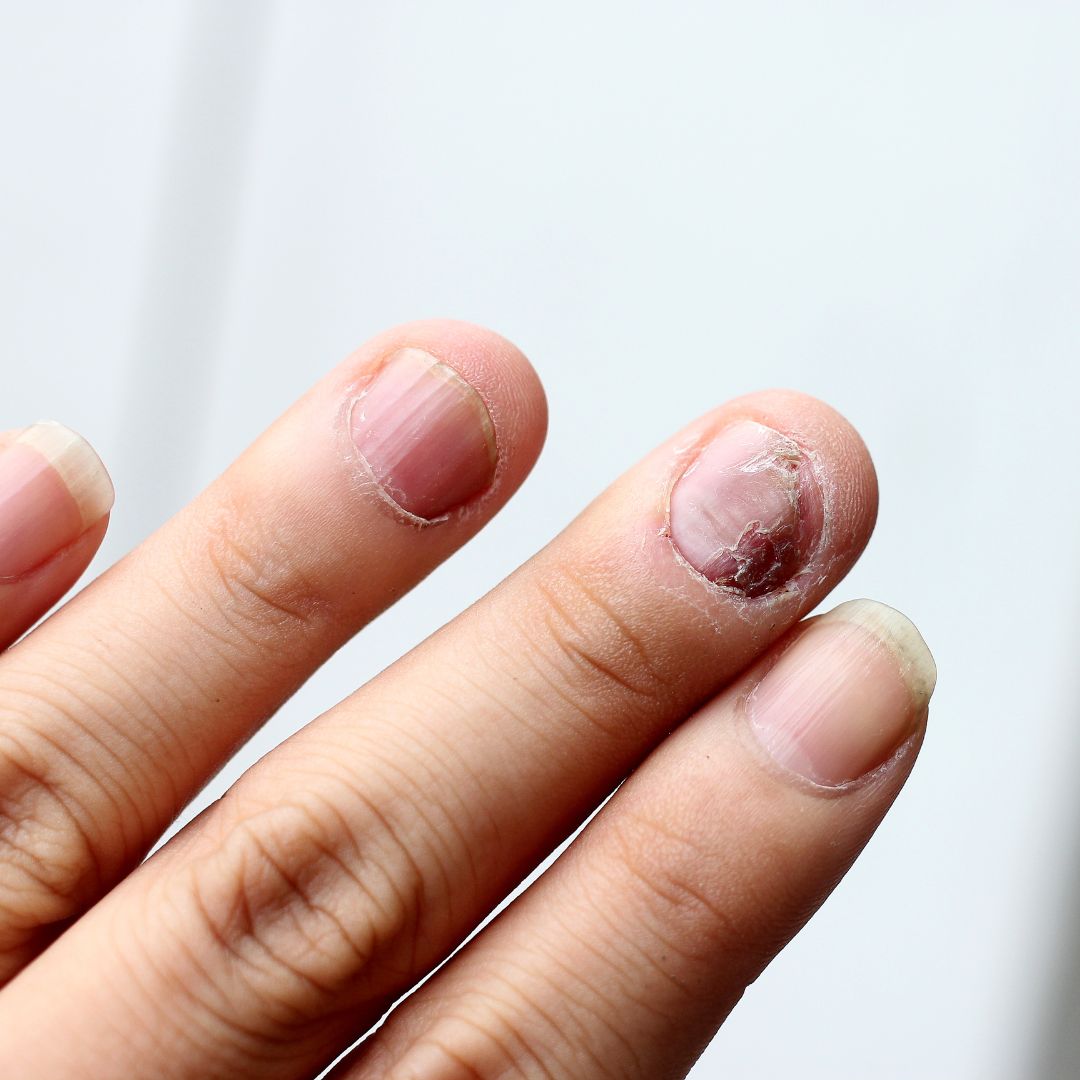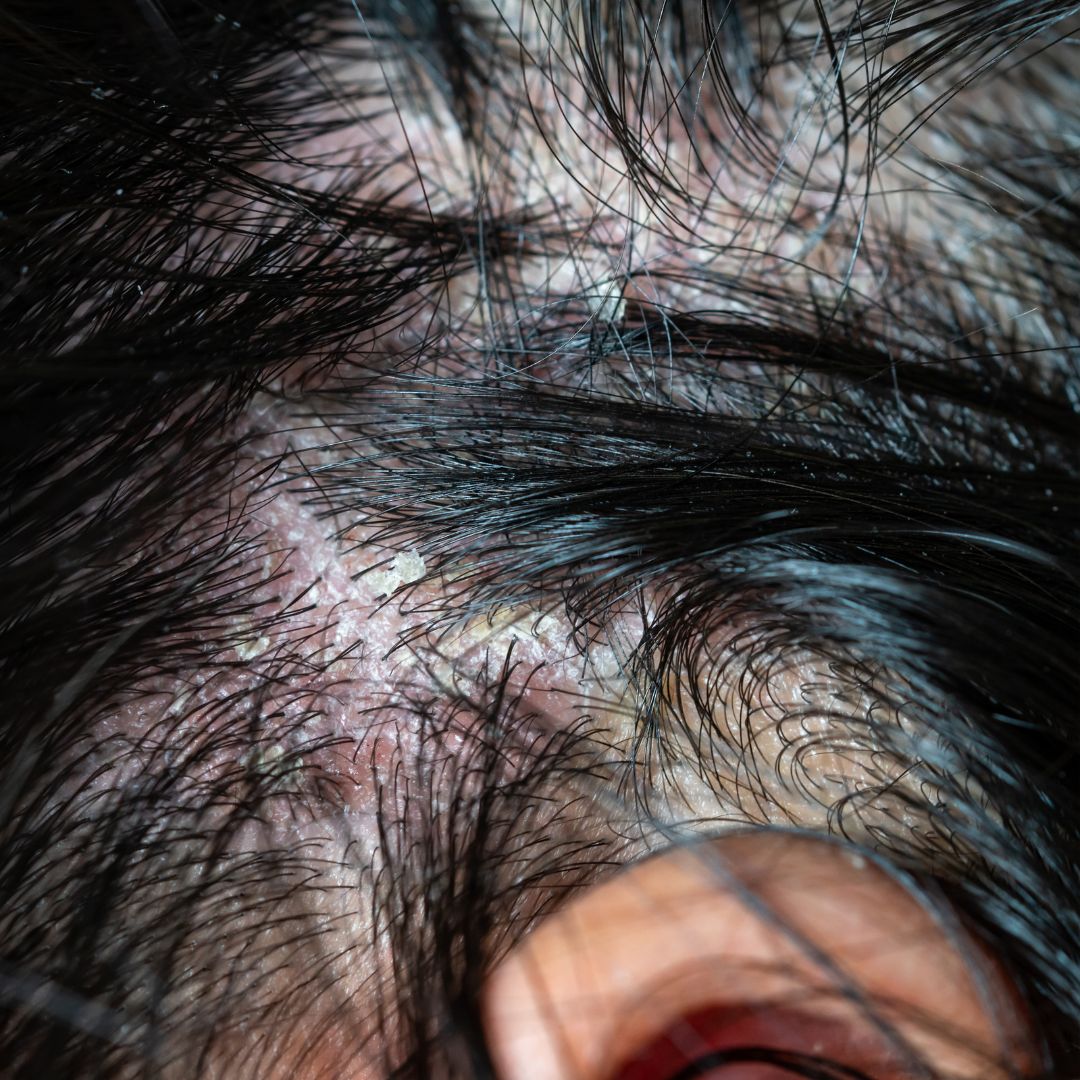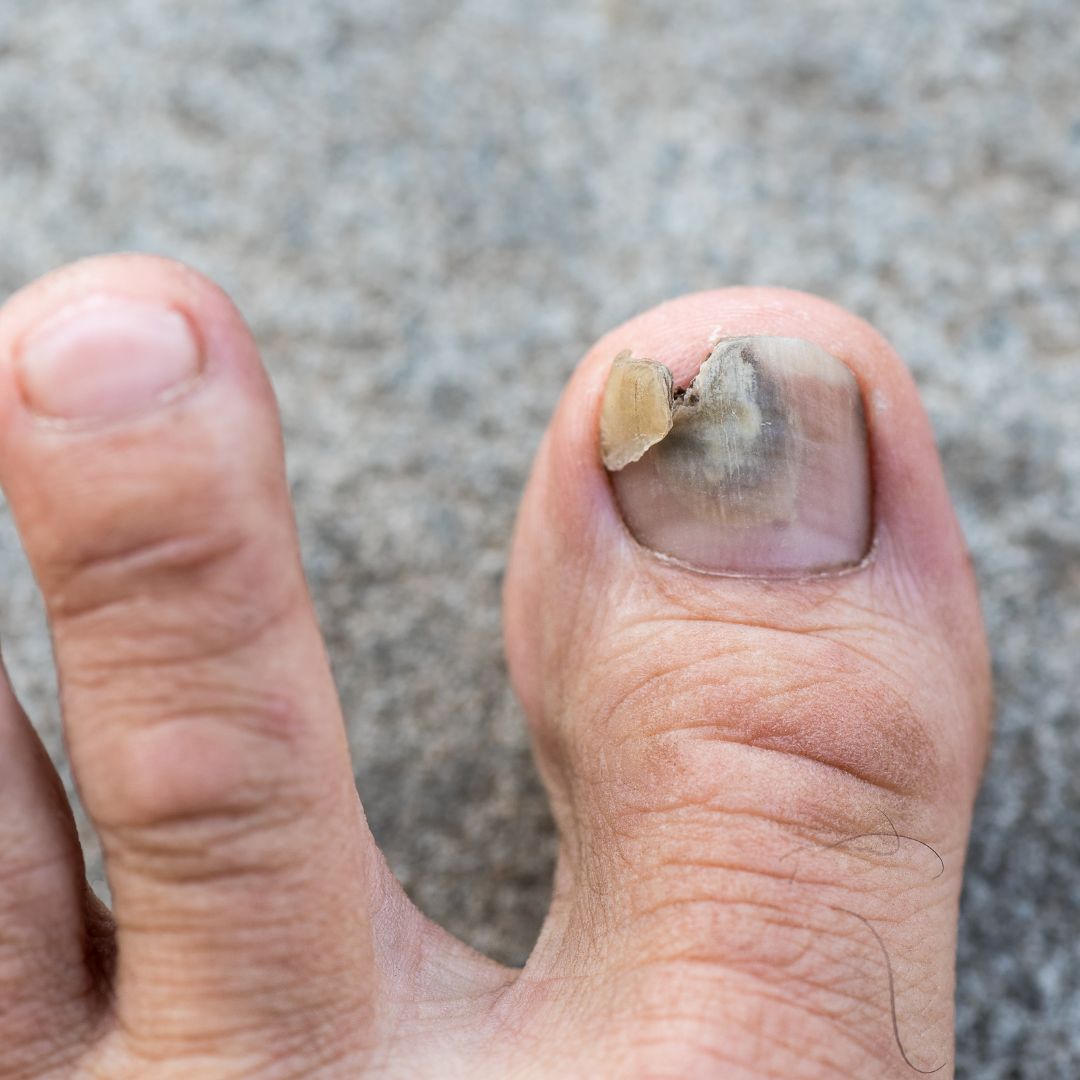5 Ways to Relieve and Manage Muscle Pain
At some point in your life, you’re likely to experience some type of muscle pain or strain.It can occur anywhere on the body and be mild or more excruciating discomfort. Muscle strains can affect anyone but are most common in those who live an active lifestyle. Whether from a recent injury or something more chronic, sore aching muscles can really slow you down and make day-to-day activities challenging.This reason alone is why we’re sharing “5 Ways To Relieve and Manage Muscle Pain.”
Learn moreHow To Naturally Combat Common PMS Symptoms
As a woman, you know that “time of the month” is around the corner when you begin experiencing menstrual cramps, body aches, mood swings, digestive issues, and nausea. For most, these symptoms resolve themselves around four days after your menstrual period has started. However, no matter the duration of your period, PMS symptoms are not fun. They can knock you down for a few days and leave you feeling miserable until it’s concluded.
Learn moreHow To Know If You Have Sciatica
By Dr. Peter Klapper Ph.D. Have you ever had a pinched nerve? You know, that burning or numbness sensation that can radiate in your extremities. Most times a pinched nerve can resolve itself, but what happens if it doesn’t seem to be going away? Some nerve pain can indicate a greater problem such as a herniated disc, tumor or an overgrowth of bone on your vertebrae. However, more times than not, the nerve that becomes pinched by these issues is the sciatic nerve in turn causing sciatica.What Is Sciatica?Sciatica is nerve pain from an injury or irritation to the sciatic nerve, which originates in your buttock/gluteal area. If you suffer from “sciatica,” you can expect to experience pain through the lower back, hips, buttocks and down your legs.Sometimes this can be a result of an injury, and other times it happens just from living life. Normal aging can put your nerves at risk of being pinched along with health conditions such as diabetes, pregnancy, and osteoarthritis. However, most people tend to get sciatica between the ages of 30 and 50, are overweight and either have an inactive or overactive physical lifestyle.So, what does it feel like?Up to 85% of Americans experience some type of back pain during their lives. Many times, this type of back pain can look like muscle strains in the lower back, so it’s important to understand what sets sciatica apart when trying to diagnose the pain you may be experiencing.With Sciatica, the pain will radiate down the leg and into your foot. Imagine a constant bad leg cramp that isn’t going away. You will feel numbness or weakness in your lower back down to your feet, pain that worsens with movement, “pins and needles” in your legs and feet, and possible loss of bowel and bladder control. The pain most often occurs on one side and can also feel like a dull ache mixed with a burning sensation.How To Ease The PainThere are many forms in which you can treat sciatica. Most times, your doctor will start with less intrusive measures that don’t require surgery. That can look like various exercises and stretches from physical therapy that work on increasing core strength, strengthening the lower back muscles and working other muscles that are inflexible.Other treatments include ice and heat therapy, massage, and chiropractic therapy, over the counter pain relievers, steroids, injections and in worse case scenarios, surgery.Treat Sciatica NaturallyIf you’re looking for a more natural approach to treat your sciatica, try our fast-acting back pain product or our natural nerve pain relief. Our natural back pain relief medicine provides powerful relief from sudden sharp pain or constant aches from lower back pain and sciatica. How does it work? Well, the combination of natural organic plant medicine combined with Arnica for sprains, muscle, and tendon relief and Rue and Horse chestnut, has been historically used to help reduce inflammation naturally to ease back pain.Forces of Nature Back Pain Relief is great for those who are looking for an alternative back pain treatment with no side effects.
Learn moreThe Benefits of Using Essential Oils
What exactly are essential oils? While essential oils are a popular form of aromatherapy treatment, you might still feel lost on how they can benefit you after using these oils captured from plants. Don’t worry, we will break it down for you.
Learn moreUnraveling the Mystery of Nail Psoriasis: What You Need to Know
If you’re one of the millions living with plaque psoriasis or psoriatic arthritis, there’s a good chance that your fingernails will be affected too. Roughly 90% of people with psoriasis will experience nail psoriasis. Here’s what to know and do about nail psoriasis.
Learn moreHomeopathic Medicine - Is It Right for You?
Homeopathy, have you heard of it? This form of alternative medicine, also known as homeopathic medicine, is a method in which practitioners will use a small amount of natural substances (which causes a disease in a healthy person) to treat someone who is ill. And while this type of medical treatment has been around since the 19th century, there is still a lot people don’t know about homeopathy when deciding if it’s the best treatment option for their current ailment.
Learn moreThings to Know and Do About Scalp Psoriasis
More than 60% of people with psoriasis will develop some scaling on their scalp, according to the National Psoriasis Foundation (NPF). Your scalp may be the first place you spot and develop psoriasis.
Learn more4 Tips to Treat Summer Ailments with Natural Medicine
By Dr. Peter Klapper Ph.D. We are currently in the thick of summer and with fun warm weather activities can come the not-so-fun ailments. Whether you enjoy camping, hiking, swimming, heading to the beach, vacationing to the tropics, or even just barbecuing with friends, we’ve got you covered. Enjoy summer 2022 with these 4 tips on how to avoid and treat summer ailment by the use of natural medicine.Starting with…1. Summer Skincare Remedies Sunscreen We get it, there’s nothing better than having a nice bronze tan to make you feel glowing this summer. However, keep in mind that when you’re at the beach or pool, it’s important to take care of your skin by actively applying sunscreen.The Skin Cancer Foundation says that daily use of SPF 15 can reduce a person’s risk of developing melanoma by 50 percent and squamous cell carcinoma (SCC) by about 40 percent. Sunscreen and moisturizing also protect your skin against premature aging.If you do find yourself burned, there are natural ways to treat your sunburn.The fix? Keep your skin cool and hydrated. Be sure to drink a lot of water and apply a cold compress to the area that has been burned for 10-15 minutes several times a day. Another great natural solution is the use of Aloe Vera. Aloe contains chemicals that have anti-bacterial and anti-inflammatory properties.Varicose Veins TreatmentSo, now that you find yourself with a nice tan, how do you deal with those pesky skin issues that have been hidden under pants all season? If you suffer from a disorder such a varicose veins or spider veins, you might feel insecure wearing shorts.First off, more than 3 million Americans suffer from varicose veins every year, so know you’re not alone. Varicose veins appear on the inner leg, lower leg/calves when faulty valves in your veins allow blood to pool or flow in the wrong direction. The results are enlarged, swollen, twisted and often dark purple or blue veins. While these veins are mostly cosmetic, they can cause problems like heavy legs or cramps in the calves which can be very painful.Spider veins are a much milder form of varicose veins. Thinner they usually appear blue, purple, or red and lie just under the surface of the skin. Forming in web like or branch patterns on the legs or even face. Sun damage can cause tiny blood vessels to burst which causes the spider veins on the face.The fix? Try our Natural Varicose Vein Treatment that contains a blend of proven effective medicinal plants that help to eradicate spider and varicose veins without adverse side effects and a dramatic healing effect. You’ll be feeling confident wearing shorts before you know it!Skin TagsWhat about donning your swimsuit for the first time and noticing a nasty skin tag? Well, first you need to understand the that skin tags and moles are different. While both are typically benign growths on your skin, there are also factors that make them quite different.For the most part, moles are benign and harmless, tend to be black or brown and are round and flat in shape. They can show up as early as 3 years old but tend to be a result of a lot of sun exposure, which is why it’s important to pay attention to your skin. If a mole turns colors or morphs into a different asymmetrical shape, get it checked out by your doctor.Skin tags are fleshy overgrowths that appear on your neck, armpits, and under the breast. They tend to be similar in color to your skin and shouldn’t cause any reason to be worried. But we get it, they’re not attractive either.Don’t worry, we have a solution for that as well.The fix? Try our Skin Tag Control Extra Strength uses a certified organic formula that works to dry out skin tags when applied topically while supporting the immune system. When application is followed as directed you can expect the skin tag to dry up and fall off in 1-2 weeks.2. Remain Fungus Free At The PoolNail FungusWe get it. It’s hot and a nice dip in the pool sounds amazing. Whether you head to the neighborhood pool or public pool, it’s imperative to know how to avoid any ailments that might be lurking.Seriously, watch where you step and make sure that you always have shoes on if you aren’t in the pool. Why? Because infections such as nail fungus are likely to be found in a pool environment. The fungus that causes these infections thrive in warm, moist environments i.e. swimming pools.If you do find yourself dealing with nail fungus, we have just the thing.The fix? Try our natural Nail Fungus Treatment, which is an advanced extra strength nail fungus treatment that safely removes nail fungus in and under the nail. Results can often be seen within days. Athlete's FootSimilar to contracting nail fungus, athletes’ foot can also be contracted by not wearing the proper footwear in bathrooms and locker rooms. Athlete's foot is a common fungal infection that most people get from walking barefoot in moist public places, like a swimming pool deck or locker room. Try to take the proper precautions by wearing shoes in these areas, making sure you have socks that dry quickly and don’t share towel or shoes. However, if you find that you’ve contracted athlete’s foot, know that we have the right treatment for you.The fix? Try our Natural Athlete's Foot Treatment is a organic anti-fungal that quickly relieves and cures the itching, burning, and irritation from fungal infestations associated with athlete’s foot and jock itch.3. Be Prepared Before Hitting The TrailAnti-Itch TreatmentNothing quite screams summer like hitting the trail or packing up your camping gear for an adventure out in nature. And while spending time outside is refreshing and beautiful, nature’s beauties can also become a pain – literally. Don’t head outdoors without a solution. The last thing you want is to encounter poison oak or ivy without a way to combat it. The same goes for mosquito bites.The fix? Try our Anti-Itch Extra Strength roll on treatment. By rolling on our anti-itch remedy, you can fight nature with nature as this oil features a blend of super potent anti-inflammatory medicinal plants which help stop uncomfortable itching associated with insect bites, mosquito bites, poison oak, ivy, sumac, and skin irritations. 4. Avoid Heartburn at BarbecuesHeartburnAnother staple summertime activity are barbecues. And if there is one thing we know, these family and friend gatherings are filled with great food but can be uncomfortable if you suffer from heartburn. The last thing you want is to come home from a fun event and feel the burning and acid of a favorite dish creeping back up your throat.Summertime classics such as red meat, deep fried foods, tomato-based foods (salsa and ketchup), citrus food and drinks, peppers, garlic, onions, and alcohol consumption can be the leading culprit to a heartburn attack.So, how can you enjoy these BBQ favorites without the sting of acid in your chest? We have just the thing.The fix? Try our fast, effective, and easy Natural Heartburn Relief. It’s a perfect solution for discomfort associated with heartburn, acid indigestion, GERD, sour stomach, upset stomach due to symptoms of, pressure, bloating, gas, burning, and sour acid burp. The best part? it is easy to use and small enough to bring out with you.All of that said, we hope that you are having a wonderful summer and are not only able to enjoy your favorite activities with these tips but now have the right products to keep in your bag whenever they might be needed!
Learn more6 Steps to Extinguish Acid Reflux Naturally
By Dr. Peter Klapper Ph.D. Acid reflux is common, but it’s not “normal,” and you can put an end to the bothersome symptoms associated with it. You know the feeling all too well. It starts with that telltale burn in the center of your chest and gets worse the minute your head hits the pillow, especially after a heavy meal.This unpleasant sensation is called acid reflux, acid indigestion, or heartburn, and it can also make it harder to swallow. You may feel like there’s a lump in your throat, and some people also report feeling fluid coming back up their chest.Other acid indigestion symptoms can include: Chronic cough Raspy or hoarse voice New or worsening asthma Sleep disturbances Here’s why it happens: Stomach acid flows backward up into your esophagus (the tube connecting your mouth and stomach), causing the burn. The acidic backwash can irritate the lining of your esophagus. This is called gastroesophageal reflux (GER).If your acid reflux and heartburn are occurring more than twice a week, you may have gastroesophageal reflux disease (GERD). Acid reflux may be normal for you, but it’s not normal and there are lots of things you can do to feel better.1. Lose weightObesity is considered a major risk factor for developing GERD. If you are overweight or obese, losing weight can help extinguish your acid reflux.2. Quit smokingSmoking can aggravate acid indigestion. If you smoke, quit, and if you don’t, never start.3. Watch when and what you eatEating large meals or eating late at night can be a recipe for acid indigestion. Instead, try to eat your main meal in the middle of the day.4. Avoid heartburn triggersFatty or fried foods, alcohol, coffee, citrus fruits, tomatoes, chocolate, mint, and spicy foods can all cause acid reflux. Keep a symptom journal to see if you can identify your triggers, and then take steps to avoid them.5. Change your sleeping positionPlace a foam wedge or extra pillows under your head so it elevated by about 6 to 8 inches. This keeps your esophagus above the stomach so that gravity works in your favor, not against it.6. Go naturalIf you are constantly popping over-the-counter or prescription medications to relieve heartburn and other GERD symptoms, if may be time to try something new and natural instead. These drugs can cause side effects, especially if they are used too frequently.Certain homeopathic ingredients can help tame heartburn. These include Berberis vulgaris, Iris versicolor, Ginger, Valeriana officinalis and Calendula officinalis. Force of Nature’s Heartburn & Acid Reflux Relief has all of these ingredients, which work synergistically to extinguish heartburn and acid indigestion. Place 6 to 9 drops under your tongue at first signs of symptoms and repeat every 15 minutes until your symptoms are gone.References:National Institute of Diabetes and Digestive and Kidney Diseases (NIDDK). Acid Reflux (GER & GERD) in Adults. https://www.niddk.nih.gov/health-information/digestive-diseases/acid-reflux-ger-gerd-adults
Learn moreHow to Spot and Naturally Treat Toenail Fungus
By Dr. Peter Klapper Ph.D. At last, it’s summertime - the season of sandals and the chance to show off that freshly done pedicure. That might be the thought for some, but if you suffer from nail fungus, the last thing you want to do is showcase your toes to the world. The good news is that toenail fungus can be treated, but first, how did you get it in the first place?WHAT IS TOENAIL FUNGUS? Toenail fungus, also known as onychomycosis, can be challenging to treat, especially if it’s been left untouched and has spread. The problem is that the infection can go along time without anyone noticing because they tend to be painless until it gets to the point of wreaking havoc on your nail. It is highly contagious and notoriously difficult to treat as it burrows into the nail and nail bed. It’s also important to know that there are three main types of toenail fungus all in which infect the toenail differently based on the nature of the fungus.The three are as follows:Subungual Onychomycosis: the same type of fungus that causes athlete’s foot infection stars under the skin underneath the nail.Candida Onychomycosis: a toenail fungus that is caused by yeast, although it is less common to be found in the nails.White Superficial Onychomycosis: this type of infection occurs only on the top layer of the nail and appears as white spots. It’s the easiest to get and the easiest to treat. But, if left untreated, can cause the nail to become rough and crumbly.So, how can you avoid these? Well, fungus tends to linger in damp areas such as community pools, gyms, and locker rooms. It’s a good idea to keep your nails trimmed short, always wear shoes if possible, and to frequently change sweaty socks and shoes, especially in the summertime.WHAT DOES THE COLOR OF MY TOENAIL INDICATE?No, we’re not talking about your hot pink toenails, but the color of your unpolished nail. Of course, what you’d like to see is the translucent nature of the nail, but what if it’s black, yellow, white or green?Yellow ToenailIf you have noticed that your toenail has turned to a yellow tint, you may want to look into purchasing an antifungal treatment, because fungus is likely the culprit.Green ToenailWe hate to say it, but if your toenail is green in nature, it’s likely the nail is infected with bacteria. Green-nail syndrome, known as Chlronychia, is when the infection has inhabited underneath the nail. This bacterium is usually picked up in damp and wet conditions, so knowing the cause of the infection can help with the course of treatment.White ToenailHave you noticed a bunch of white spots on your toenails? The culprit is likely White Superficial Onychomycosis. As we stated above, this form of toenail fungus shows up in white spots or powdered like patches. If you see this on your nails, treat it sooner than later before it causes your nail to become crumbly.Black / Dark DiscolorationIf your toenail appears black or dark, it can be from the cause of physical trauma to the toe. Whether it’s a bruise or dried blood, it should clear up on it’s own. However, in some cases, a brown streak on a toenail can indicate something more serious such as an inflammatory condition or melanoma. It never hurts to get it checked out by your doctor.HOW TO TREAT TOENAIL FUNGUSIf you’re looking for a natural, effective way to not only treat your toenail fungus, but to restore brittle and discolored nails, try our natural nail fungus treatment. It delivers a curative effect to nail fungus infections via topical application. The lipophilic properties of the oils we use readily absorb into cell membranes of nails due to their low molecular weight. This is critical as the infection resides in and under the cells of the nail.
Learn moreArthritis Isn’t Just for Senior Citizens
By Dr. Peter Klapper Ph.D. Most people think of arthritis as a painful condition that strikes older adults after decades of placing too much wear and tear on their joints.While many adults do develop arthritis, this condition can also affect children under the age of 16. In fact, nearly 300,000 kids and teens in the United States have a form of juvenile arthritis, according to the Arthritis Foundation.Unlike osteoarthritis, the wear-and-tear form of the disease, juvenile arthritis is typically autoimmune or autoinflammatory in nature. This means that the body engages in friendly fire against its own bones, joints, and tissues, causing pain, inflammation, trouble walking, and other symptoms.Many types of arthritis can affect kids. The most common one is juvenile idiopathic arthritis (JIA), which is an umbrella term for several types of arthritis, including oligoarthritis, polyarthritis, systemic JIA, enthesitis-related JIA, juvenile psoriatic arthritis, and undifferentiated JIA. (Idiopathic means that the exact cause is unknown.)Other types include:Juvenile myositisJuvenile lupusJuvenile sclerodermaVasculitisFibromyalgiaSome kids also develop skin symptoms such as a scaly red rash with juvenile psoriatic arthritis, a butterfly-shaped rash across the nose and cheeks with juvenile lupus, or thick patches of skin with scleroderma. Your child’s eyes may also be inflamed and sensitive to light with certain types of arthritis. Other symptoms of juvenile arthritis include fatigue, appetite loss, and high fevers. The disease can also affect internal organs such as the lungs and heart as it progresses.Like other types of autoimmune disease, juvenile arthritis is marked by periods of flares of high disease activity and periods of remission where symptoms are nonexistent.There is no cure for juvenile arthritis, but prompt diagnosis and aggressive treatment can stop the disease in its tracks. Immune-modulating medications can help cool inflammation and prevent progression, while other types of medications can relieve symptoms. A well-rounded treatment plan typically includes medication, regular physical activity, and a healthy diet. There’s also a growing role for complementary therapy such as acupuncture; Forces of Nature Joint Pain Relief, an organic, plant-based topical product that can be rolled on painful, swollen joints; and other modalities.The bottom lineIf you think your child has signs of arthritis, check in with your pediatrician to learn the next steps. Diagnosing the condition early and treating it aggressively is the best way to help your child preserve joint function and mobility.Learn more about juvenile arthritis at the National Institute of Arthritis and Musculoskeletal and Skin Diseases.
Learn moreA Short Guide to Seasonal Allergies - All Year Long
By Dr. Peter Klapper Ph.D. For some people, each spring there’s no surprise that they find themselves dealing with itchy and watery eyes, constant sneezing, a runny nose, dry throat and cough, headaches and more. Why? Because as the winter snow melts away, and trees and plants begin to blossom, so do your allergies.And while many of us attribute allergies to spring, did you know that each season poses different allergens that can throw your immune system out of whack?Allergies and Your Immune SystemFirst off, what causes allergies?Well, when an allergen enters your body, it may be harmless, but your immune system mistakes it as a dangerous invader. The problem with this mistake is that when it enters your system in the future, your body is programmed to create antibodies that release a chemical known as histamine. The histamine released is what causes your allergy symptoms.Common allergens are airborne such as pollen, animal dander, dust mites and mold. People can also experience allergic reactions to certain foods, insect stings, medications, and other various substances.Most of the time with airborne allergies, your airways, sinuses, and nasal passages are affected, and the reaction can range from being mild to severe. However, in those severe cases, allergies can turn into anaphylaxis, a condition that causes your body to go into shock. That said, it’s important to keep note and be aware of any allergies you may have.So, what allergens are prone to appear each season?Spring: Tree PollenHave you found yourself with the sniffles lately? If so, you’re more than likely allergic to some variant of pollen. During the Spring, trees, grasses and weeds release grains into the air to fertilize other plants. While this process makes springtime so green and beautiful, it can cause your body’s defense system to overreact.The histamines we discussed earlier are what cause the itchy eyes, runny nose, sneezing, headaches, etc. If you find yourself experiencing a strong reaction to the pollen, be sure to find ways to combat your symptoms if you can. However, the problem with pollen is that it doesn’t have to be your tree outside causing your flare up, pollen can unfortunately travel for miles.Common tree pollen triggers are: Alder Ash Aspen Beech Birch Box elder Cedar Cottonwood Elm Hickory Juniper Maple Mulberry Oak Olive Pecan Poplar Walnut Willow Summer: Grass PollenSimilar to the spring, pollen is also the culprit in the summer months – specifically grass pollen. While grass pollen does fertilize in the spring, too, it reaches moderate to high levels throughout the summer months. And when it’s warm, most people find themselves outside amongst the pollen saturated air.See, the problem lies in the fact that spring’s moisture in our lawns prepares it for pollination at the beginning of summer. Our lawns make look lovely, but that green grass can cause agony for those who are allergic.The grasses that tend to be the culprit are as follows: Bermuda Johnson Kentucky Bluegrass Meadow Fescue Rye Timothy Fall: Weed PollenJust as you begin to think that the allergy months are behind you, fall begins to poke its head out. With fall, most of us associate the changing in leaves with plant life dying and hibernating for the winter. However, ragweed pollen is just beginning to pollinate.About 75% of people who are allergic to spring plants are also affected by ragweed which tends to pollinate in late summer through November but is at its highest in mid-September. While ragweed can be found nationwide, it’s most common on the east coast and in the Midwest.Other fall allergens include: Burning bush Cocklebur Lamb’s-quarters Pigweed Sagebrush and mugwort Tumbleweed and Russian thistle Winter: MoldAs snow begins to fall, it’s impossible for there to be any seasonal allergens, right? We wish that were true, but no. In the winter months, as you begin to spend more time inside, indoor allergies become the culprit. Imagine this, it’s freezing outside so naturally, you turn on the heater. The problem there is that when your heater kicks on, dust and mold spores are pushed into the air, which causes your body to react.Common winter allergens are: Mold Dust Mites Pet Dander Insect Droppings How To Avoid AllergensNow that you know what allergens are most active during certain months, how do you treat your symptoms?Well, if you can, try and avoid your allergen whenever possible. If the pollen count is high one day, stay inside. Pay attention to the weather. Pollen levels are highest when it’s warm, dry and windy, so if it’s just rained, it’s a perfect time to get outside.Did you spend a lot of time out today? If yes, then wash your clothes and hair as soon as you get home. Certain fabrics attract pollen and less breathable fabrics are ideal for mold, so if you can, try wearing natural cotton fibers during your peak allergy season.If you like to workout outside, shoot for later hours. Pollen and mold levels tend to be higher from 5 a.m. to 10 a.m. It’s also a good idea to stay hydrated. Believe us, your body (especially your nose) will thank you for the extra hydration.NATURAL TREATMENTSIf all else fails and your desperate for some relief from your allergy symptoms, think about giving our Maximum Strength Allergy Medication a try. It naturally relieves common indoor and outdoor allergy symptoms including hay fever, hives, watery eyes, runny stuffy nose, rhinitis, sneezing, itchy eyes and throat from pollen, ragweed, grasses, animal dander and mold. Our natural allergy relief medicine works to stop the inflammatory response that allergies cause while stimulating your body's natural healing response to desensitize your body to allergens over time. We also understand that not all allergies are alike, and you might be experiencing other symptoms as well. Other products that work well are our Natural Sinus Relief remedy and for headaches or migraine attacks caused by allergies, try Migraine Pain Management and Headache Pain Management.
Learn more












